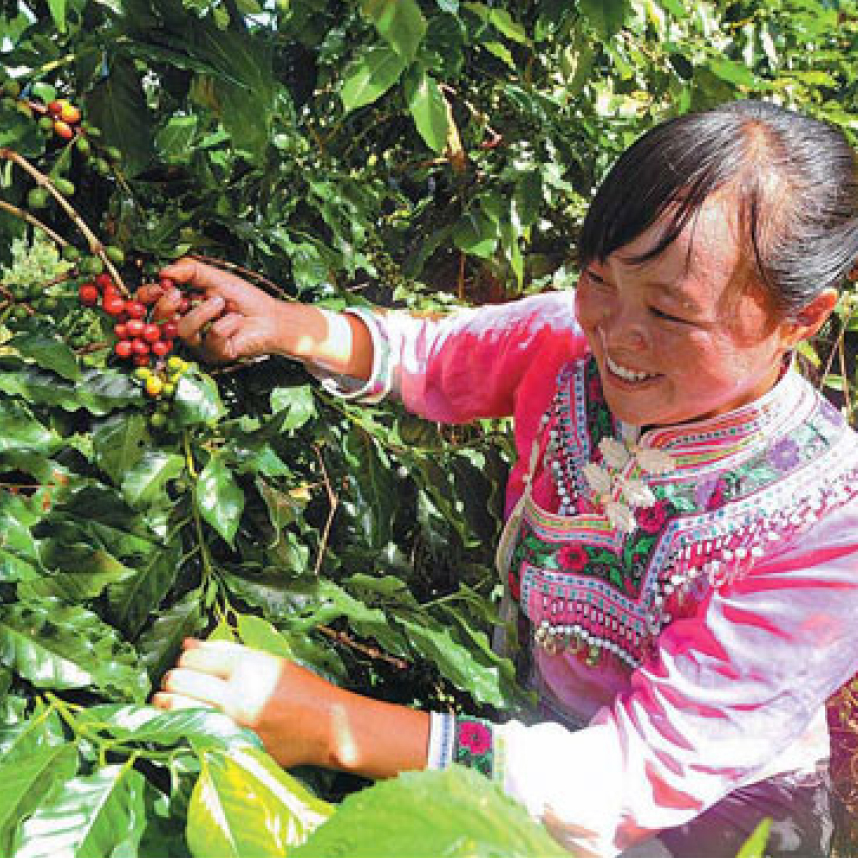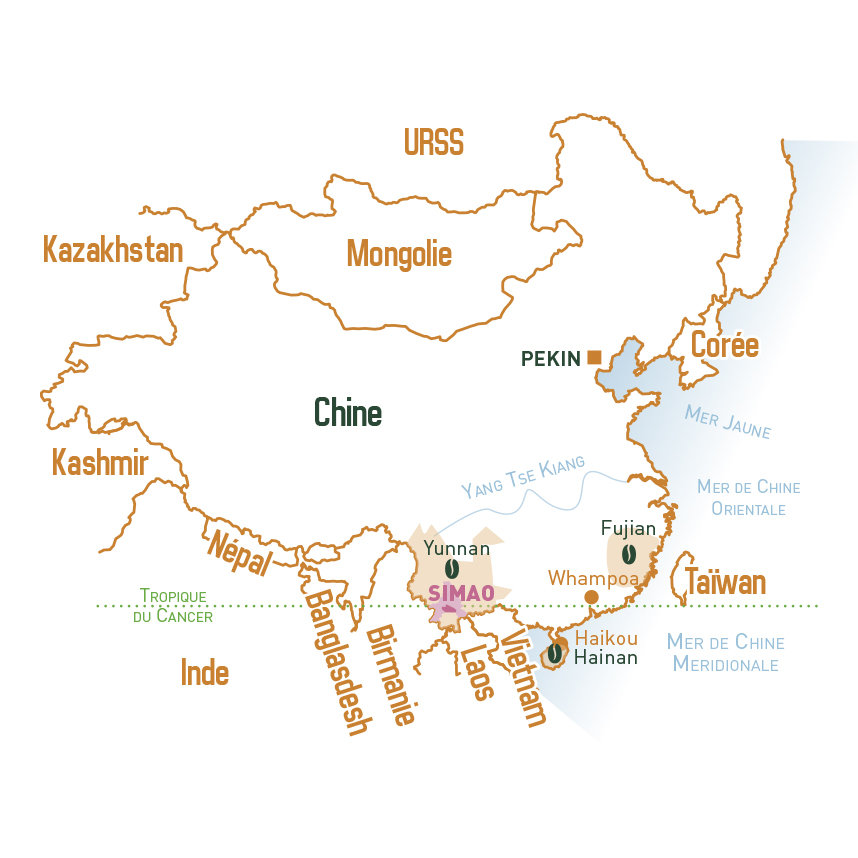
China
Type: Arabica
Processing: Washed
Classification: Simao G1
Region: Pu’er Simao
Notes: A very fragrant, slightly spicy coffee, perfect for daytime drinking.
Background
Chinese Arabica mainly grows in Yunnan, where the best tea trees in the country are also planted. The grain, originally from Yemen, was introduced to this south-western region of China at the end of the 19th century by a French missionary.
But coffee farming was limited due to a lack of outlets. That changed at the end of the 1980s when the government decided to give it a boost, with support from the United Nations and Nestlé.
Chinese production has increased from 104 000 60-kilogram sacks in 1998 to around 1.5 million today, which is about the same as Costa Rica.
With Nestlé now buying 20% of every million sacks of Chinese green coffee (60 000 tonnes), production has increased tenfold over the last 15 years. According to French importer Patrick Masson (Jobin), some Chinese Arabicas are still a bit sharp, but others have already reached a high level of quality.
Chinese Arabica has also come to the rescue of roasters, at a time when the coffee leaf rust fungus had decimated farms in Central America. At the same time Brazil, the world's largest coffee producer, has seen its production plummet due to drought.
Geography
More than 95% of all coffee grown in China comes from Yunnan Province. With its mountainous landscape and mild climate, this province is well suited for coffee production. Bordering Vietnam, Laos and Myanmar, it is at the heart of the coffee belt.
The coffee is grown in the Simao region in south-eastern Yunnan, between 700 and 1 200 metres above sea level, which is where the soil is very fertile.
There are about 80 000 hectares of land used for coffee farming in this region.
Most of the plantations are located between 700 and 1 200 meters above sea level and are cultivated by small producers.

Crop information
Species:
• Arabica
• Robusta
Origin:
• Robusta from Indonesia in 1920
• Arabica in the 1950s
Harvest:
October to December
Altitude:
From 1 000 to 2 000 m
Irrigation:
In the Wan Ning area.
Processing:
Washed
First exports:
December
Port:
In Hainan: Haik’ou
Economy
The rise in coffee prices in recent years has encouraged many farmers to start growing the crop, which is less onerous and more profitable. Additionally, there is a growing Chinese enthusiasm for this previously ignored drink.
According to the ICO, local consumption increased from around 199 000 sacks in 1998 to 1.1 million in 2012. National consumption is increasing by 12.8% annually and could potentially reach 2.8 million sacks by 2020. Another motivating factor is global demand, which is still increasing. There is also a deficit of 8.9 million 60kg sacks in the market over the 2014/2015 campaign.